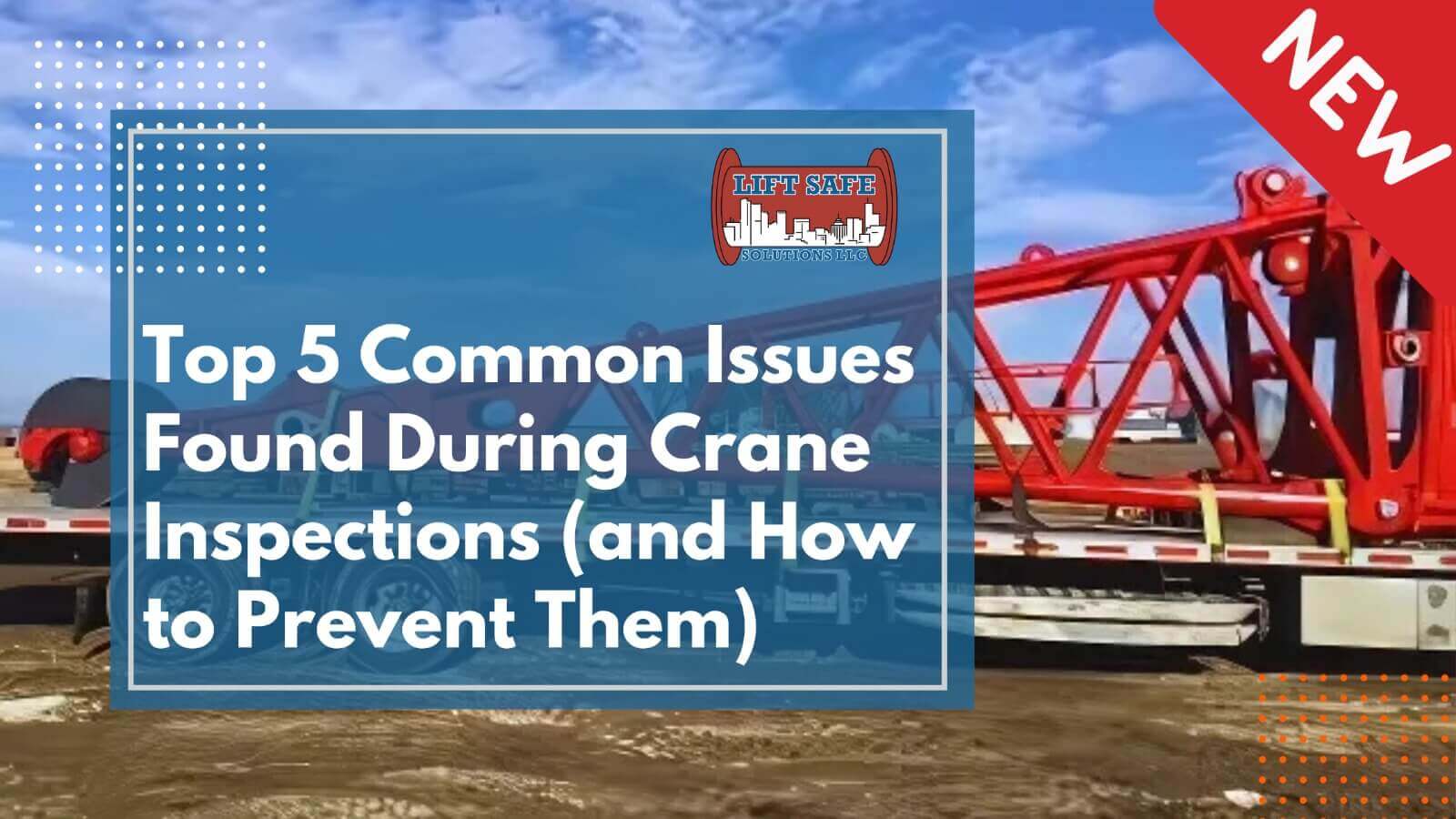Even with routine maintenance, tower cranes can develop problems that jeopardize safety and efficiency. That’s why regular crane inspections are essential for catching small issues before they turn into big, costly problems.
Even with routine maintenance, tower cranes can develop problems that jeopardize safety and efficiency. That’s why regular crane inspections are essential for catching small issues before they turn into big, costly problems.
In this post, we will break down the top five most common issues found during crane inspections—and show you how to prevent them to keep your project safe, compliant, and on schedule.
1. Wire Rope Damage
Frayed, corroded, or kinked wire ropes are one of the most common—and dangerous—issues. Damaged ropes can snap under load, leading to dropped materials or even crane collapse.
Prevention Tip:
Perform daily visual checks and schedule regular rope replacements based on usage and manufacturer guidelines.
2. Worn Brake Systems
Cranes rely heavily on their brakes to control loads safely. Inspections often find brake pads worn down, hydraulic leaks, or delayed stopping response.
Prevention Tip:
Set up a strict maintenance schedule to check and replace brake components before they show significant wear.
3. Loose or Corroded Bolts and Pins
Bolts and pins hold critical parts of the crane together. Over time, they can loosen or corrode, threatening the crane’s structural stability.
Prevention Tip:
Tighten and replace bolts during every scheduled inspection, especially after periods of heavy use or severe weather exposure.
4. Hydraulic System Leaks
Leaks in hydraulic hoses or cylinders can lead to operational failure or dangerous malfunctions during lifts.
Prevention Tip:
Inspect hydraulic lines regularly for signs of wear, cracking, or seepage. Replace hoses at the first sign of degradation.
5. Faulty Safety Devices
Limit switches, overload sensors, and emergency brakes are vital to safe crane operation. Inspections often find these devices malfunctioning or improperly calibrated.
Prevention Tip:
Test all safety systems during each inspection. If anything isn’t working perfectly, repair or recalibrate immediately.
What Does a Professional Crane Inspection Include?
A thorough inspection covers:
Structural Examination – Checking for cracks, corrosion, and fatigue.
Mechanical System Review – Testing wire ropes, hoists, brakes, and hydraulics.
Electrical Inspection – Verifying all control systems, alarms, and wiring.
Load Testing – Ensuring the crane can safely lift its rated capacity.
Detailed Reporting – Providing full documentation for OSHA compliance and insurance needs.
Trust Lift Safe Solutions LLC for Reliable Crane Inspections
We understand that your project's success depends on safe, reliable equipment. Our certified inspectors deliver:
Detailed, Actionable Reports – Clear findings and recommendations.
Fast Turnaround – So you can minimize downtime.
Preventative Maintenance Plans – Helping you avoid future breakdowns.
We don’t just inspect your cranes—we help you protect your team, stay compliant, and finish your projects on time.
We also operate a Colorado Crane Operating Training School.
Don’t Wait Until a Minor Issue Becomes a Major Problem
Contact Lift Safe Solutions LLC today to schedule your next crane inspection. Protect your investment, your workers, and your project’s success.
